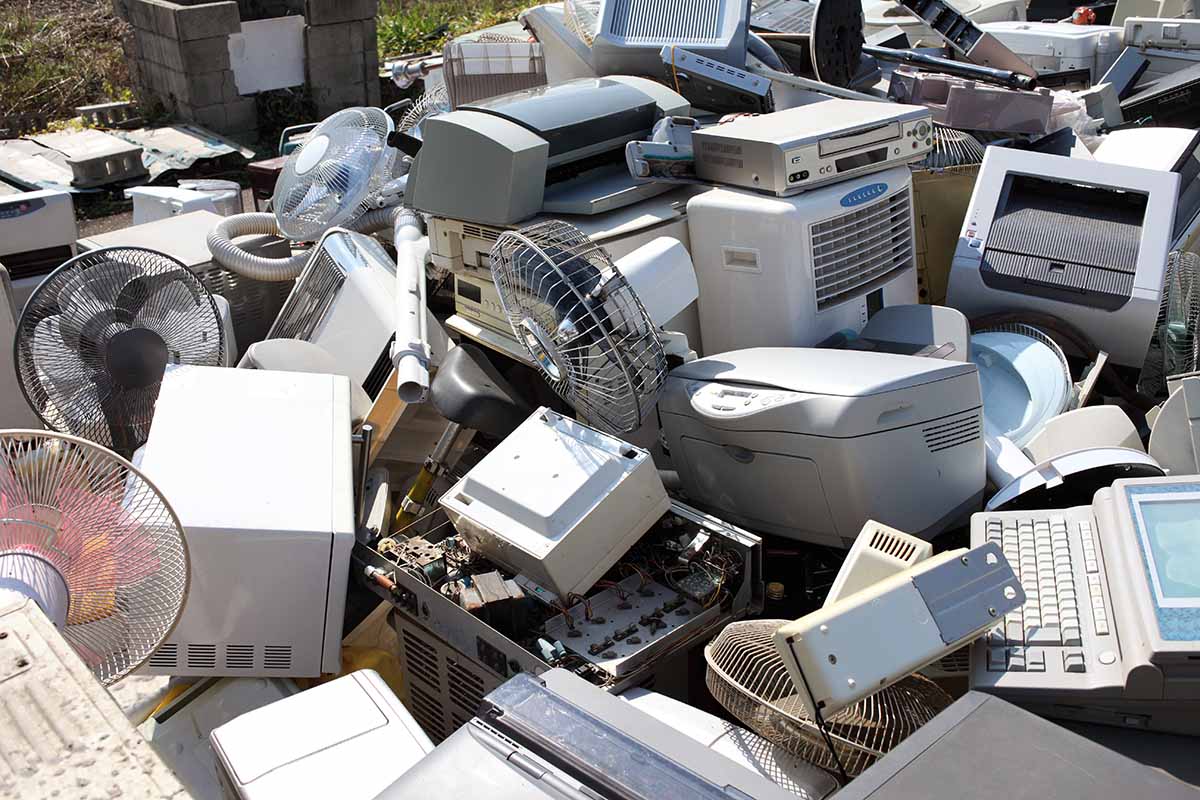
Study authors found that white goods such as refrigerators and washing machines made up half of Minnesota’s e-scrap by weight. | Akiyoko/Shutterstock
Researchers in Minnesota recently estimated what a statewide 100% e-scrap recycling rate would look like in terms of metals recovery, finding that it would generate 78.6 million pounds of metals worth $2.8 billion.
The pilot study, conducted by analysts from Repowered, Macalester College and the Iron Range Partnership for Sustainability, brought together “industry, environmental activism and academia” to spark further inquiry into and investment in Minnesota’s e-scrap recycling capacity, the report noted.
The study aggregated reports, local data and peer-reviewed research on e-scrap from 2017 to 2022 to estimate the total weight of 62 elements.
The researchers then estimated what the market value would be at a 100% recycling rate. Currently, Minnesota has a 23.7% e-scrap recycling rate, the report noted, and about 266 million pounds of e-scrap is available for recycling in the state every year.
Using data from a Minnesota collection facility, the researchers estimated that a typical stream of material was mostly made up of, by weight, white goods (for example, refrigerators and washing machines), IT and personal displays and printers.
White goods alone constituted 50% of the stream, followed by IT and personal displays at 12.5% and printers at 8.0%. PCBs and memory boards came next at 6.5%, followed by scrap metals at 5.7% and consumer electronics at 3.2%.
Rounding out the smaller item types are small household appliances at 3.0%; waste and e-plastic at 2.8%; laptops, notebooks and tablets at 2.4%; IT and networking equipment at 1.9%; low-grade scrap also at 1.9%; batteries at 1.4%; and lighting at 0.3%.
The remaining 0.6% was miscellaneous goods.
Using those figures, the report calculated that about 78.6 million pounds of the 62 metals would be available statewide at a 100% recycling rate.
The top 10 recovered materials, by weight, are iron (40.6% of total weight), copper (32.2%), tin (9.6%) aluminum (8.5%), lead (3.3%), zinc (2.5%), barium (0.7%), nickel (0.4%), sulfur (0.4%) and manganese (0.3%). The other 58 elements studied make up the remaining 1.5%.
Looking at the recovery from an economic standpoint, the top 10 elements recovered from the e-scrap stream, by value, at a 100% recycling rate were primarily palladium and platinum, which would bring in $1.5 billion and $1.0 billion, respectively. Combined, that’s 90% of the value in the top 10 list.
Copper and tin are third and fourth in that ranking, bringing in $107 million and $101 million, respectively, followed by lithium at $14 million, iron at $12 million, aluminum at $8 million, silver and ruthenium at $6 million each, and iridium at $4 million. The other 58 elements studied would bring in $24 million combined.